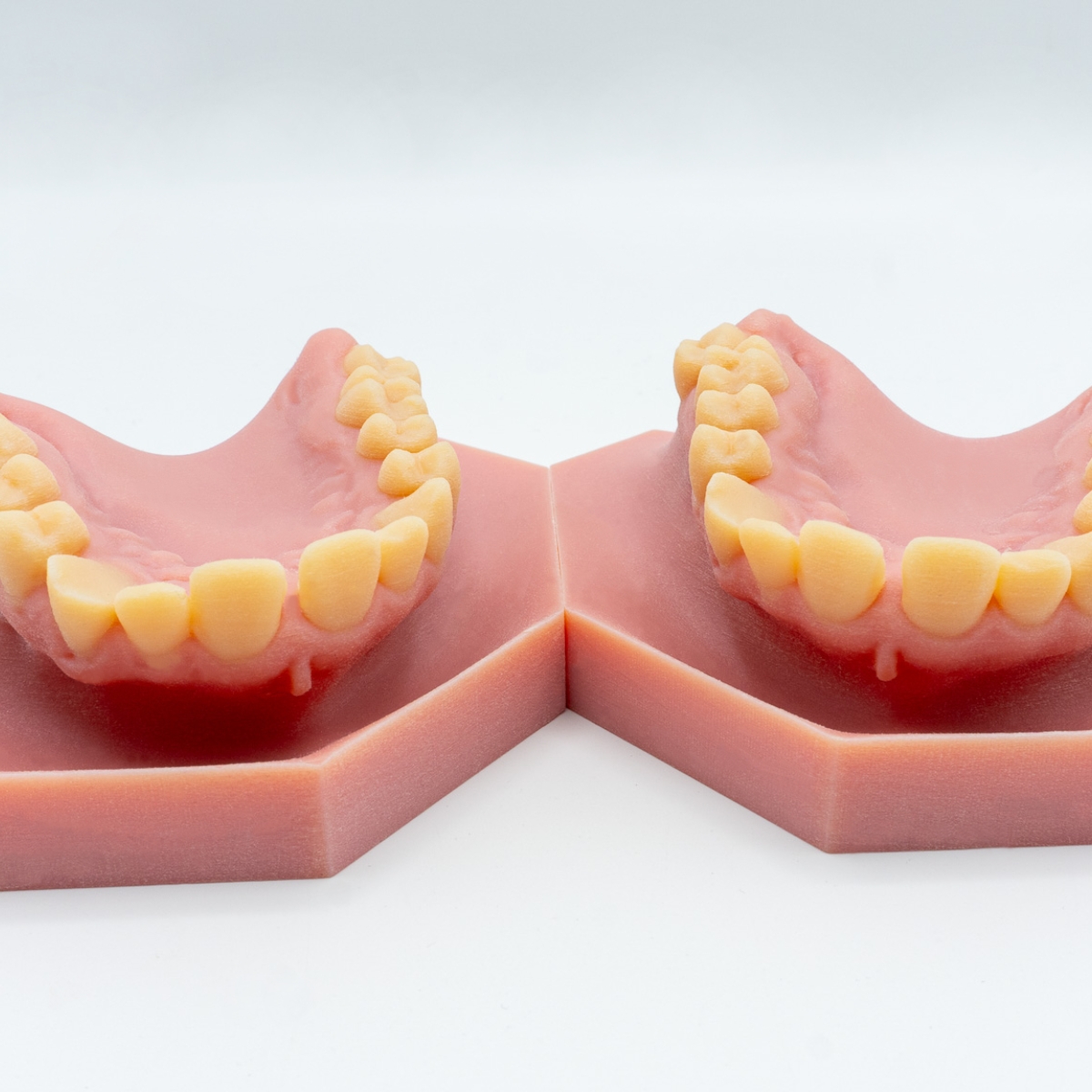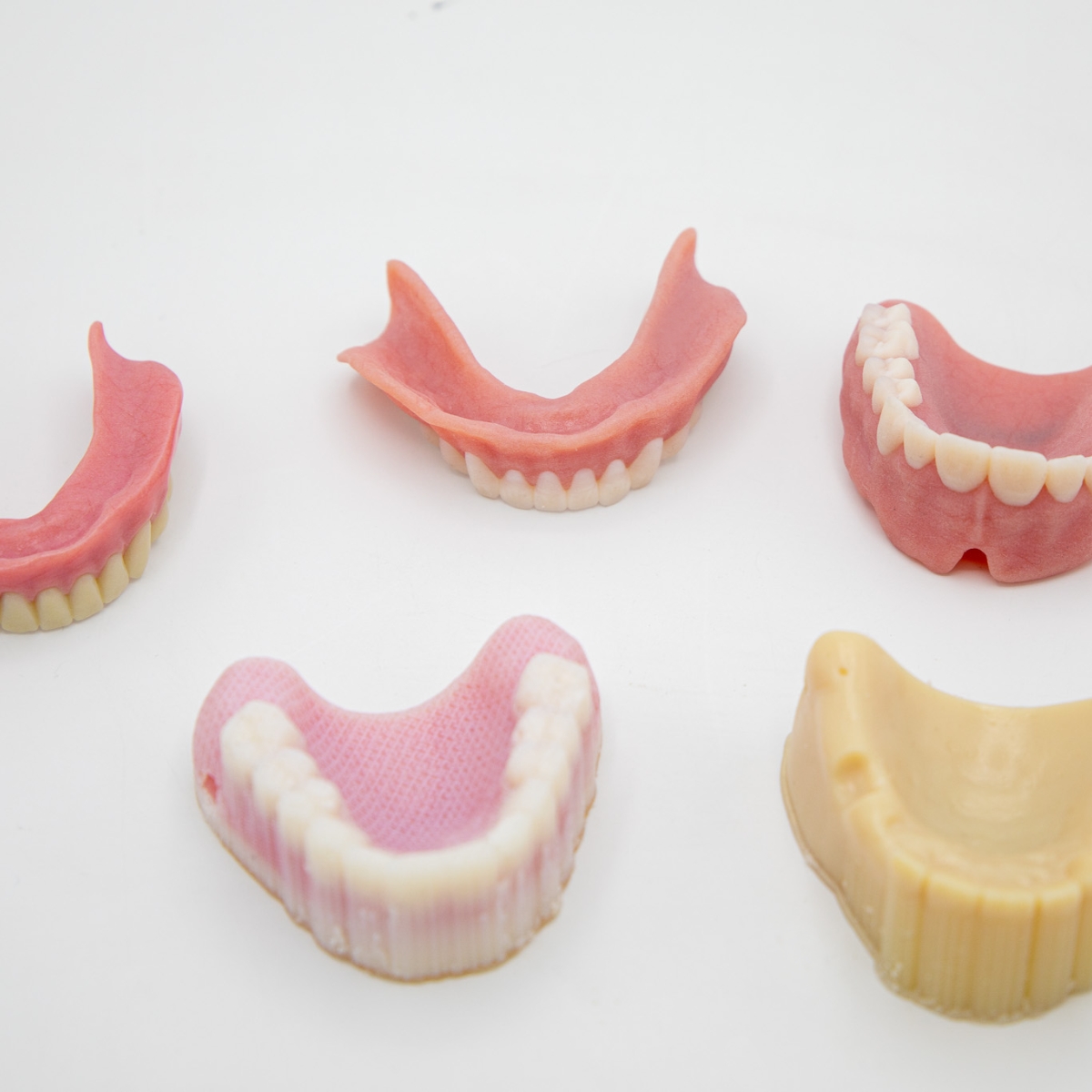Digital Teeth – The possibilities of Additive Manufacturing in the Dental Industry

Teeth can be a real pain in the neck. Even with good care, certain conditions cannot be ruled out – and there are quite a few of these. Bruxism, caries, gingivitis, pulpitis, tooth root inflammations and many other diseases exist, and people have to deal with them every day.
Every day is no exaggeration here. The health insurance funds' expenditure on dental treatments (16.7 billion euros in 2022), approx. 1.3 million dental implants (as of 2018) and 69,075 dental surgeries (as of 2017) speak for themselves.
All these figures are consistently rising. In 2017, the cost of dental treatment was still 14.1 billion euros, and the number of dental implants has increased by around 242% (!) in the last 25 years. The reasons for this are obvious – life expectancy is increasing and at the same time our eating habits are becoming less and less tooth-friendly.
Unfortunately, additive manufacturing cannot change these reasons. It also cannot prevent dental diseases. But it can simplify and improve treatment methods, make them more cost-effective, and at the same time increase patient safety and comfort – and it is already achieving all of this on a large scale.
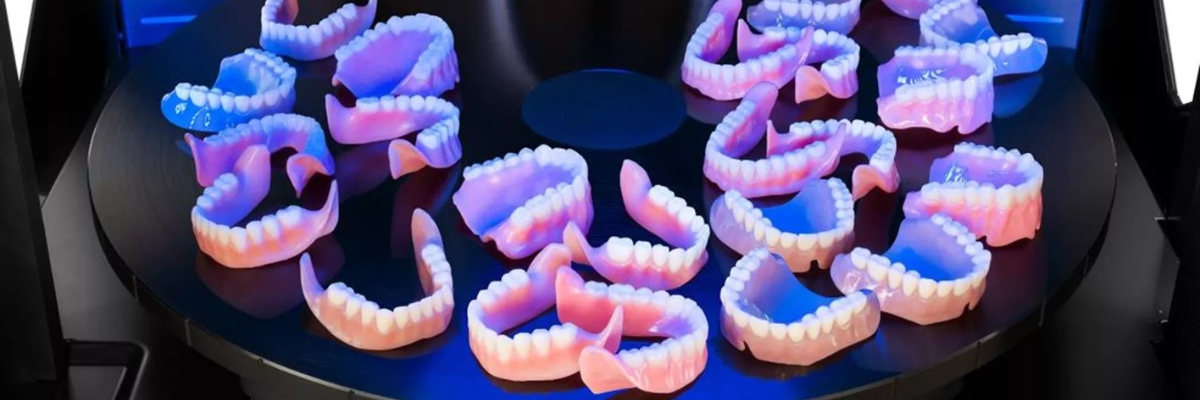
Which type of Additive Manufacturing is suitable for the dental industry?
Before we get to the many possibilities of 3D printing in dentistry, we should first clarify which of the numerous technologies within additive manufacturing are suitable for fulfilling these possibilities for the dental industry. The answer to this question is also quickly given – resin 3D printing.
Resin 3D printing, which hardens liquid biocompatible resins using UV light, has long been a guarantee for the fast and detailed production of various indications and tools for dentistry due to its immense accuracy and the wide range of materials specially designed for the dental industry.
The subcategory of resin 3D printers generally plays a subordinate role. Whether stereolithography (SLA), digital light processing (DLP), lubricant sublayer photocuring (LSPc®) or PolyJet™ – all these technologies are capable of producing high-quality parts, although certain details, such as speed, may vary. For a more detailed overview of the individual subcategories of resin 3D printing, I recommend the following introduction to the topic.
In addition to resin 3D printing, powder 3D printing is also suitable for illustrative models and prototypes. However, fully functional indications are not yet possible with this printing technology, which is why resin 3D printing remains the only option for additive manufacturing, at least for the time being.
How does Additive Manufacturing enable greater efficiency?
So now we know the ideal 3D printing technology for dentistry – all well and good. But how exactly can additive manufacturing help to make the dental industry more productive?
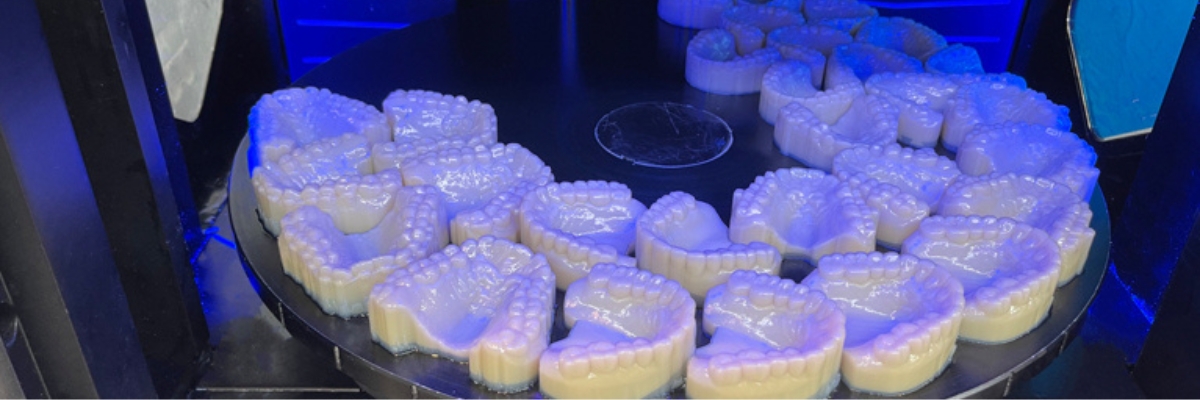
Faster, more precise, more customised
3D printing offers various advantages over conventional subtractive manufacturing. One of the biggest advantages, particularly in the dental industry, is the high speed of 3D printers.
Many dental diseases cause severe pain for the patient, and even if the waiting time for the appropriate treatment can be bridged with painkillers, it is still associated with great discomfort for the patient. Additive manufacturing enables faster production of the relief the patient is hoping for, thus increasing patient satisfaction and comfort.
In terms of precision, too, additive manufacturing methods have now reached an extremely high level. Particularly when it comes to the fine details that are essential for many indications in the dental industry, 3D printing can outshine conventional manufacturing methods.
The increased design freedom offered by additive manufacturing provides another significant advantage – individuality. No two dental arches, jaw shapes or alveolar processes are the same. It is therefore essential that dental indications are precisely adapted to the respective patient in order to ensure functionality as well as safety and comfort for the patient. Furthermore, precise customisation also saves the dental laboratory and dentist time, as multiple adjustments are not necessary.
However, the advantages of 3D printing in dentistry do not begin with manufacturing – the process around it is also simplified and improved by additive manufacturing.
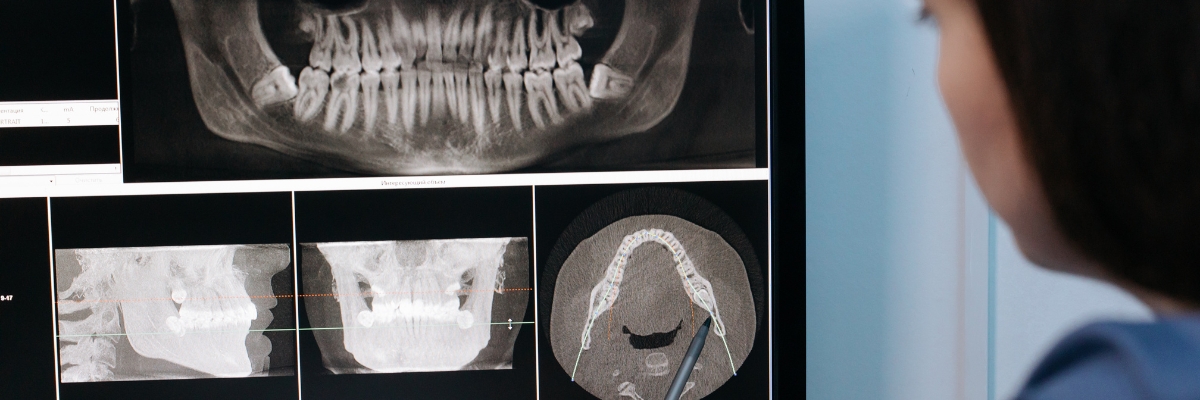
Digitalisation of the dental industry
In Germany, the word ‘digitalisation’ usually only draws tired smiles or sad looks. In many areas, digitalisation is happening too slowly, with too little transparency and too much complication, to the extent that it could almost be considered a utopian pipe dream.
Fortunately for us, the dental industry is different, and digitalisation is not a utopian pipe dream either. Digitalisation in dentistry does not begin with production, but long before that – namely with the impression.
Whereas a negative mould of the oral area is traditionally created by the patient biting on alginate or polyether, which is then filled with plaster, additive manufacturing works exclusively digitally and therefore uses intraoral scanners to obtain an image of the teeth or jaw.
These intraoral scanners offer several advantages. On the one hand, the level of detail is much higher than with conventional impressions, and on the other hand, error correction is greatly simplified because it can be easily carried out on the digital model. At the same time, the running costs for the dental practice can be minimised because new impression material does not have to be constantly procured, and the reduced space required for the practice should not be underestimated.
This reduction in space is achieved by digitally storing the patient image, which has another major advantage – the complete digitalisation of the patient file. No more printed images in brown-beige folders, but long-term storage as a CAD model, which also makes it much easier to compare several images over time, which can be of the utmost importance, especially for long-term treatments.
Additive manufacturing not only improves production, but also makes the entire in-house process more efficient. And in-house is the right keyword here, because additive manufacturing offers a further advantage for dental practices: in-house production of their indications.

Reducing transport distances and waiting times
Just a few years ago, 3D printing in dentistry was reserved exclusively for large dental laboratories. The machines were too expensive and too large, and handling them was too complex. However, with the widespread introduction of desktop 3D printing solutions, this oligopoly was broken up and now even smaller dental laboratories and even dental practices can enjoy the benefits of additive manufacturing.
This increased availability, especially for dental practices, brings massive benefits for both patients and dentists themselves. For patients, it means even shorter waiting times and thus, as already discussed, less pain, and for dentists, it massively reduces costs by eliminating the middleman between them and their indications.
Of course, this does not mean that dental laboratories are being replaced by these desktop solutions. Industrial dental 3D printers are still necessary, especially for complex indications or large production volumes, and the experience of large dental laboratories should not be ignored, despite the promising future of the technology – especially for costly indications, where mistakes can be costly.

Reduction of production costs
As essential as the quality of the indications and the patient's well-being are, at the end of the day, the work and production must be cost-effective. Fortunately for us, 3D printing can also score highly in this aspect within dentistry.
Dental materials for 3D printing are generally in a similar price range to traditional subtractive manufacturing materials. However, where additive manufacturing outperforms subtractive manufacturing is in its material efficiency – and thus in its cost efficiency.
In subtractive manufacturing, material is removed to create components, which inevitably leads to scrap. In contrast, in additive manufacturing, the component is created layer by layer, which means that no excessive scrap is produced. Only the thin support structures for the respective indication have to be disposed of, which nonetheless means a massive reduction in waste production.
Another cost that 3D printing can reduce is personnel costs. While a lot of work still has to be done by hand or under supervision in conventional production, 3D printing solutions are now equipped with highly automated functions that make it possible to simply ‘press start, walk away, and receive the indication’.
Last but not least, there is a trivial economic fact that is nonetheless highly important. If you produce more, you can make more money. The massively increased production speed offered by 3D printing ensures greater capacity and thus more opportunities to make money – both for dental laboratories, by reselling the indications, and for dental practices, by increasing their patient capacity.
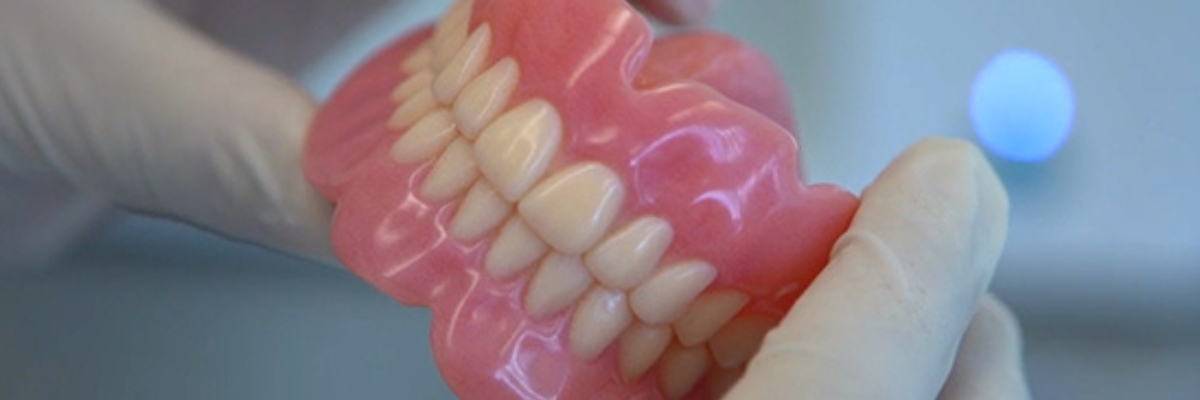
Which tools and indications can be produced additively?
Now that the advantages of additive manufacturing within the dental industry have been explained, it is of course essential to show the tools and indications that can be additively manufactured.
The classic application of 3D printing in dentistry is models of all kinds. Whether simple illustrative models, models with dies or models with crown margins to check the fit. The high degree of customisation is particularly important here, as it allows models to be produced that can accurately reflect the characteristics of each individual patient.
Another long-established application is custom impression trays. Even though intraoral scanners are becoming increasingly popular and offer a wide range of advantages, classic impression trays are still widely used and 3D printing makes it possible to produce them more quickly, cost-effectively and in higher quality.
Customised surgical guides from the 3D printer are also very popular with dentists, because autoclavable and biocompatible surgical guides for the placement of implants, for example, can now be ideally produced using additive methods.
The list of indications that can now be additively manufactured is long. Splints of all kinds, whether bruxism, transfer or occlusal splints, dentures, bridges, crowns – the list goes on and on.
While most of the materials were not suitable for use on the human body when 3D printing first became widespread in dentistry, several manufacturers now produce and distribute materials for short-term contact, e.g. class IIa, or even for permanent contact with the human body.
This now makes it possible to additively manufacture permanent dental prostheses, which would incur much higher costs and longer waiting times in conventional production. Unfortunately, the range of manufacturers and materials for such permanent indications is still relatively limited – but the future will almost certainly bring further development and progress.
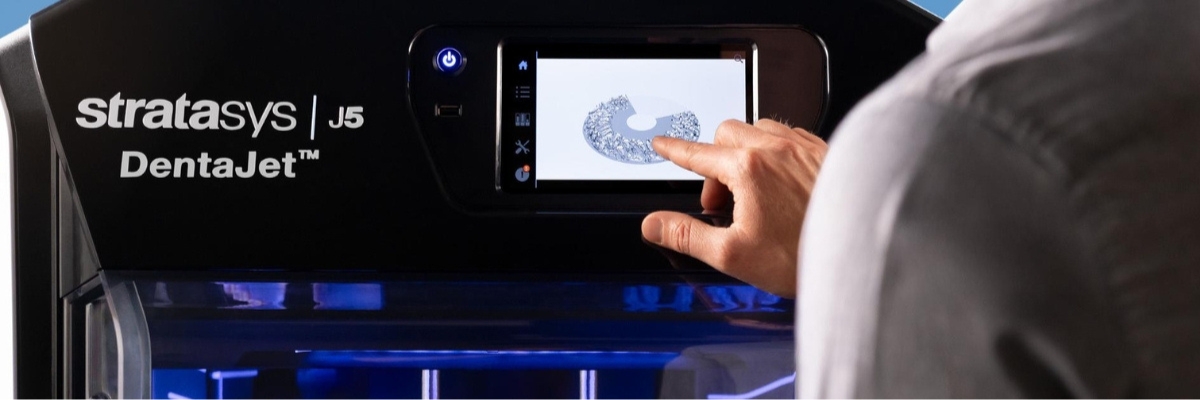
Conclusion
While the gradual digitalisation of the dental industry began in the 1970s with the first digital scans and was further advanced with the first 3D printers in the 1990s, the progress was only very slightly noticeable for a long time – especially for the patient.
But in recent years, dental 3D printing has been booming. In particular, the spread of desktop 3D printing solutions has given a real boost to dental digitalisation. More and more dentists are switching to additive production for their indications, and more and more dental laboratories are offering the option of purchasing 3D-printed parts.
This trend is not going to stop any time soon. The advantages of additive manufacturing are just too great. However, it is still unclear exactly where research will take us. Which new indications, materials and printing solutions will be added – that is still a secret.
But as soon as these secrets are revealed, you can be sure that work is already underway on a new article about the advances in the dental industry. So check back here regularly or follow me on LinkedIn.
